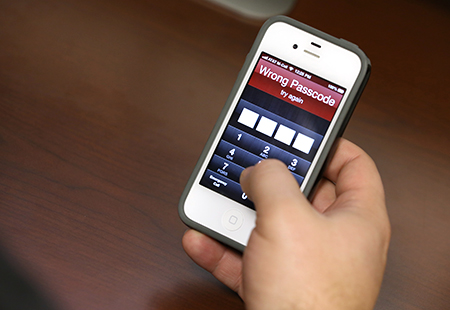Mobile phones have become an integral part of our daily lives, serving as not only a communication tool but also a repository of personal information and data. Unfortunately, as technology advances, so do the methods of fraudsters and cybercriminals. Mobile phone fraud is a growing concern in the United Kingdom, with various types of scams and schemes targeting unsuspecting individuals. In this blog post, we’ll explore the different forms of mobile phone fraud in the UK and provide you with practical tips on how to protect yourself from falling victim to these scams.
- Types of Mobile Phone Fraud
Mobile phone fraud comes in various forms, and understanding the different types is the first step in protecting your device and personal information. Here are some common mobile phone frauds in the UK:
a. SIM Swap Fraud
SIM swap fraud involves a fraudster convincing your mobile network provider to transfer your phone number to a new SIM card in their possession. Once they have control of your number, they can intercept text messages and calls, gaining access to your personal information, including your bank accounts.
b. Phishing Calls and Texts
Phishing calls and texts are attempts to trick you into revealing sensitive information, such as your bank details, by posing as a trusted entity like a bank or government agency. The fraudsters may use alarming messages, threats, or promises of rewards to manipulate you.
c. Smishing
Smishing is a combination of SMS and phishing. Scammers send fraudulent text messages that usually contain links or attachments that, when opened, can install malware on your device or lead you to a fake website where you’re prompted to provide personal information.
d. Vishing
Vishing is voice phishing, where fraudsters call you, pretending to be from a trusted organization, and try to get you to reveal sensitive information, like bank account details, by creating a sense of urgency or fear.
e. Fake Apps
Cybercriminals create counterfeit apps that appear legitimate but are designed to steal your personal information, access your contacts, or track your online activities. Installing such apps can expose your data to hackers.
f. Fraudulent Online Marketplaces
When shopping online, it’s crucial to be cautious of fraudulent marketplaces and sellers. Scammers may set up fake online stores or post counterfeit listings to deceive consumers into making payments for products that don’t exist.
- Protecting Your Mobile Phone from Fraud in the UK
Now that we’ve outlined the various types of mobile phone fraud, let’s delve into how you can protect your device and personal information from these scams.
a. Use Strong Authentication Methods
One of the most effective ways to secure your mobile phone is to use strong authentication methods. This includes setting up a PIN code, pattern lock, fingerprint, or facial recognition to unlock your device. In addition, enable two-factor authentication (2FA) for your mobile apps and accounts whenever possible. 2FA adds an extra layer of security by requiring you to provide a second form of verification, such as a one-time code sent to your phone, in addition to your password.
b. Be Cautious with Calls and Texts
Exercise caution when receiving calls and texts from unknown or suspicious numbers. If someone claiming to be from a trusted organization contacts you and asks for personal information, hang up and contact the organization directly using official contact information. Avoid clicking on links or downloading attachments from unknown sources, as they may contain malware or lead to phishing sites.
c. Protect Your SIM Card
To prevent SIM swap fraud, contact your mobile network provider and set up a PIN or password that must be provided to make any changes to your account, including transferring your phone number to a new SIM card. This added layer of security will make it more difficult for fraudsters to take control of your number.
d. Install Reliable Security Software
Protect your device by installing reputable security software and keeping it up to date. These programs can help detect and remove malware, as well as provide additional security features like remote device tracking and data wiping in case your phone is lost or stolen.
e. Keep Your Operating System Updated
Regularly update your mobile phone’s operating system and apps. These updates often include security patches that fix vulnerabilities that could be exploited by hackers. Enabling automatic updates is a good practice to ensure your device is always protected.
f. Use Trusted App Stores
When downloading apps, only use official app stores like the Apple App Store and Google Play Store. These platforms have stringent security measures in place to minimize the risk of downloading fake or malicious apps. Be wary of third-party app sources, as they are more likely to host fraudulent apps.
g. Educate Yourself
Staying informed about the latest scams and fraud tactics is essential. Familiarize yourself with common fraud schemes and learn how to recognize the warning signs. Government websites, consumer protection organizations, and mobile network providers often publish information about current scams and how to avoid them.
h. Avoid Sharing Personal Information
Be cautious about sharing personal information over the phone or via text messages, especially if you did not initiate the contact. Legitimate organizations will not request sensitive data through unsolicited calls or texts. If in doubt, verify the identity of the caller or sender through official channels.
i. Check Your Bills and Statements
Regularly review your mobile phone bills and bank statements for any unauthorized or suspicious charges. If you spot any discrepancies, contact your mobile network provider and your bank immediately to report the issue.
j. Secure Your Wi-Fi and Mobile Data
Protect your mobile data by using secure Wi-Fi networks and enabling encryption on your device. Avoid connecting to public Wi-Fi networks that lack security features, as they may be susceptible to eavesdropping and data theft.
k. Secure Your Online Accounts
Secure your online accounts with strong and unique passwords. Use a password manager to generate and store complex passwords for each of your accounts. Changing passwords regularly is also advisable. This practice can help prevent unauthorized access to your personal information.
l. Report Suspicious Activity
If you believe you have been targeted or fallen victim to mobile phone fraud, report the incident to your local law enforcement agency and the Action Fraud website, which is the UK’s national fraud and cybercrime reporting center. Reporting incidents helps law enforcement track and investigate fraudulent activities.
Conclusion
Mobile phone fraud is a significant concern in the UK, and individuals must take proactive measures to protect their devices and personal information. By following the tips outlined in this blog post, you can reduce the risk of falling victim to various types of fraud, including SIM swap fraud, phishing calls and texts, smishing, vishing, and more. Being vigilant, staying informed, and implementing robust security practices can go a long way in safeguarding your mobile phone and personal data from fraudsters and cybercriminals. Stay safe, and protect your mobile phone from fraud in the UK.




